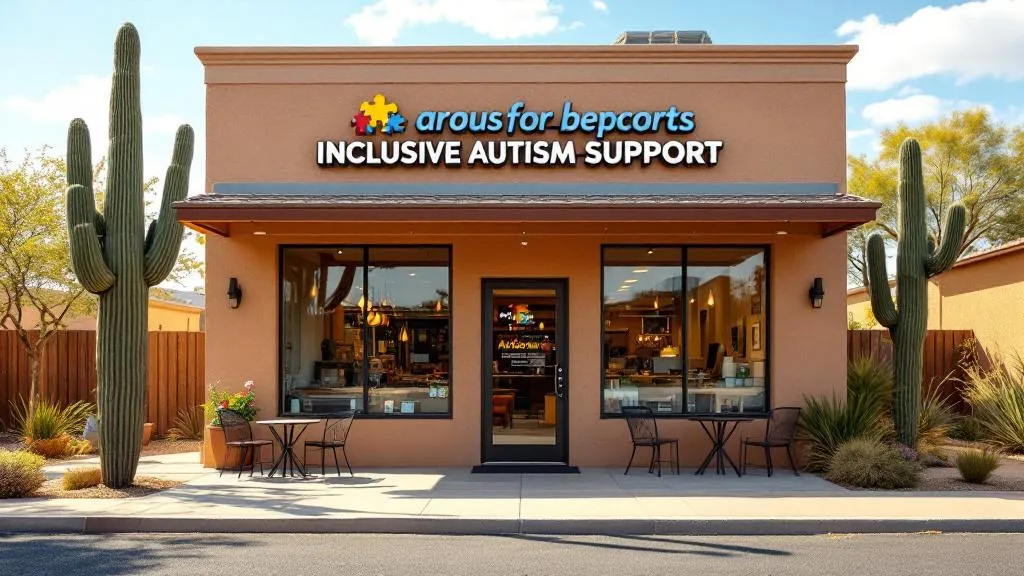Odds Of Having A Child With Autism By Age
Understanding How Parental Age Affects Autism Risk

Unraveling the Complex Relationship Between Age and Autism
Autism spectrum disorder (ASD) has become a significant focus of research due to its increasing prevalence worldwide. Among various factors influencing ASD risk, parental age has consistently been identified as a notable element. This article explores how the age of parents—particularly fathers and mothers—affects the likelihood of having a child with autism, drawing on epidemiological data, genetic considerations, and recent research findings.
The Impact of Paternal Age on Autism Risk
What is the role of genetics in the risk of autism?
Genetics play a crucial part in determining autism risk. Heritability estimates for autism range from 60% to over 90%, demonstrating that inherited genetic factors are significant contributors. Several gene mutations have been identified as related to autism, including those in genes like FMR1 and MECP2. De novo mutations, such as copy number variations, are also responsible for about 20% of cases. Genetic influences extend beyond individual mutations and include ancient DNA contributions, such as from Neanderthals, and hundreds of genes involved in brain development. While genetics provide a strong foundation, environmental factors like prenatal exposures and maternal health conditions can interact with genetic predispositions, further influencing autism risk. Overall, autism is viewed as a complex disorder shaped by both inherited genetics and environmental interactions.
How do parental ages influence the risk of autism?
Parental age affects autism risk in nuanced ways. In the general population, older maternal and paternal ages are linked to an increased likelihood of autism. Specifically, maternal age over 30 and paternal age over 35-40 are associated with higher odds. As parental age increases, so does the risk, albeit gradually. For example, children of parents in their 30s are more likely to develop autism compared to those with younger parents.
Conversely, in high-risk families—those with a family history of autism—younger paternal age (under 30) has been correlated with a higher autism risk, which may involve different mechanisms like environmental or familial factors.
Regularly, the data shows that older fathers contribute significantly to autism risk. This is largely due to age-related genetic mutations in sperm that can be passed on. The interplay of parental age involves multiple factors, but overall, both older maternal and paternal ages are recognized as risk factors, with paternal age having a particularly clear association.
At what parental age is the risk of having a child with autism increased?
The measurement of autism risk across parental ages indicates that the likelihood increases as parents grow older. For fathers, ages over 35 to 55 significantly elevate risk levels. Children born to fathers aged 35–60 are up to 24% more likely to develop autism compared to those with fathers aged 31–34. Specifically, research shows that men over 40 are 5.75 times more likely to have autistic children than men under 30. The risk for fathers over 55 can be even higher, with studies indicating a fourfold increase.
Maternal age also plays a role. Mothers aged 30 and above see a gradual increase in risk, with those over 40 having about a 40–77% higher chance of their children developing autism than mothers under 25. The absolute risk remains relatively modest, roughly 1.5% for children of younger parents and about 1.58% for children of parents in their 40s.
In summary, advancing parental age, especially beyond 35 for fathers and 30 for mothers, corresponds with a measurable increase in autism risk. These findings highlight the importance of considering parental age in understanding autism epidemiology, although the overall probabilities remain low.
Genetic Factors and Their Interaction With Age

What is the role of genetics in the risk of autism?
Genetics account for a substantial portion of the likelihood of developing autism spectrum disorder (ASD). Studies estimate heritability rates between 60% and over 90%, demonstrating that inherited genetic makeup plays a dominant role. Researchers have identified numerous gene mutations linked to autism, including alterations in known genes such as FMR1 and MECP2. These mutations can influence brain development and neural connectivity, contributing to autism risk.
In addition to inherited mutations, spontaneous genetic changes known as de novo mutations are significant contributors. These often involve copy number variations—segments of DNA that are deleted or duplicated—arising during the formation of sperm or eggs. De novo mutations are estimated to account for approximately 20% of the increased autism risk seen with older paternal age.
Genetic influences on autism also extend across generations, with evidence suggesting that mutations can be transmitted across multiple family lines. For instance, children of older grandparents have a higher likelihood of autism, indicating a potential transgenerational genetic burden.
The genetic basis of autism involves hundreds of genes affecting brain growth, synaptic function, and neural circuitry. Some genes exert their influence in a broad manner, while others are more specific to certain neurodevelopmental pathways.
While the genetic component is prominent, it does not act in isolation. Environmental factors, such as prenatal exposures, maternal health issues, and exposure to certain chemicals, can interact with genetic predispositions, shaping the overall risk. For example, maternal autoimmune conditions and toxic chemical exposures during pregnancy may compound genetic vulnerabilities.
In overview, autism is viewed as a complex neurodevelopmental disorder with a strong genetic foundation. Variations in inherited genes, spontaneous mutations, and their interactions with environmental factors collectively influence individual susceptibility. Understanding these genetic interactions helps clarify why older fathers, who are more likely to carry and pass on spontaneous mutations, increase their children’s autism risk.
How do de novo mutations impact autism development?
De novo mutations are new genetic alterations that appear in an individual without being inherited from either parent. These mutations typically occur during the formation of sperm or egg cells, especially as a man's sperm undergoes more divisions with increasing age. Because of this, the likelihood of spontaneous mutations rises as paternal age advances.
De novo mutations are particularly influential in cases of autism, contributing approximately 20% to the overall increased risk associated with older paternal age. These mutations can disrupt critical genes involved in neural development and synaptic functioning, which are essential for typical brain wiring.
Research indicates that children born to older fathers—especially those over 40—are more exposed to these spontaneous mutations. The result is a greater chance of alterations in genetic code that may lead to ASD. Furthermore, these mutations can be unique to each individual, meaning they are not passed down but occur anew in the genome.
Understanding de novo mutations enhances our knowledge of autism's etiology. It underscores the importance of paternal age as a factor influencing genetic integrity and the potential for spontaneous mutations to affect neurodevelopment.
Summing Up: The Influence of Genetics and Age
Overall, genetics form a cornerstone in autism research. Heritability estimates underscore a strong inherited component, while spontaneous mutations—particularly de novo mutations—offer explanations for increased risks with parental age. The interaction between genetic predispositions and environmental factors creates a complex landscape in autism risk assessment.
As research advances, understanding how genetic mutations, both inherited and spontaneous, interplay with age-related genetic changes will improve early detection and intervention strategies. It also highlights the importance of genetic counseling, especially for prospective parents of advanced age, to better assess and manage potential risks.
| Aspect | Description | Impact on Autism Risk |
|---|---|---|
| Heritability estimates | 60-90% of autism risk is genetic | Strong genetic influence |
| Genetic mutations | Involves alterations in genes like FMR1, MECP2 | Affect brain development |
| De novo mutations | Spontaneous mutations occurring at conception, often more common with older fathers | Account for about 20% of increased risk |
| Impact of paternal age | Older paternal age increases mutation rate, raising ASD risk | Significant correlation, especially after 40 |
| Transgenerational effects | Autism risk may be transmitted across generations via accumulated mutations | Potential hereditary pattern |
Understanding the complex relationship between genetics, age, and environmental influences is crucial in unraveling autism's etiology. This knowledge enhances preventive strategies, informs genetic counseling, and guides future research to reduce autism risk in offspring.
The Biological Basis for Age-Related Genetic Mutations

Mutations in sperm of older men
One significant biological factor contributing to increased autism risk with parental age involves genetic mutations that accumulate in sperm as men age. Sperm cells are continuously produced throughout a man's life through a process called spermatogenesis. During this process, DNA is replicated numerous times, increasing the likelihood of spontaneous mutations.
Research suggests that sperm of older men, especially those over 40, often harbor more spontaneous, or de novo, mutations compared to younger men. These new genetic changes can include single nucleotide mutations or larger structural variations called copy number variations. Because these mutations are not inherited from the parents’ previous generations but occur anew in the sperm, they are referred to as de novo mutations.
De novo mutations have been estimated to account for about 20% of the increased autism risk among children of older fathers. These genetic alterations can disrupt normal brain development and contribute to neurodevelopmental conditions like autism.
Older fathers are also more likely to pass on mutations that influence genetic stability, further raising the probability of offspring with autism. For example, a study from Mount Sinai School of Medicine found that children born to men over 40 are nearly six times more likely to have autism than those born to men under 30.
This accumulation of mutations makes paternal age a crucial factor in understanding autism's genetic underpinnings. As men grow older, the likelihood of transmitting spontaneous mutations increases, which can have profound implications on the genetic makeup of their children.
In summary, the connection between sperm mutations of older men and autism risk is supported by evidence highlighting the gradual increase in genetic alterations as paternal age advances. These mutations serve as a biological mechanism explaining, at least in part, the higher incidence of autism in children of older fathers.
What is the role of genetics in the risk of autism?
Genetics are central to understanding autism, with heritability estimates ranging from 60% to over 90%. This indicates that inherited genetic factors largely influence the likelihood of developing autism. Numerous gene mutations, such as those in FMR1 and MECP2, have been linked to autism, and de novo mutations like copy number variations contribute substantially to cases. Additionally, ancient DNA influences, including contributions from Neanderthals, and hundreds of genes involved in brain development and function demonstrate the complex genetic architecture of autism.
While genetics play a dominant role, environmental factors—including prenatal exposures, maternal health issues, and toxins—may interact with inherited genes, further influencing risk. Autism is thus recognized as a multifactorial neurodevelopmental disorder with a strong genetic baseline supplemented by environmental interactions.
How do parental ages influence the risk of autism?
Parental age affects autism risk in various ways that differ depending on the population studied and whether the family is considered high-risk. In the general population, maternal and paternal ages over 30, especially beyond 35-40 for fathers, are associated with a gradual increase in autism likelihood. Studies consistently find that children of older parents have higher prevalence rates of autism.
Conversely, in families with a high familial risk, younger paternal age (under 30) has been linked to increased autism risk, possibly due to different underlying mechanisms. Overall, the data indicate that both increasing maternal and paternal ages are risk factors, but the effect may vary across different contexts.
A notable finding is that each 10-year increase in parental age correlates with an 18% to 21% rise in autism risk. Although the absolute risk remains low—about 1.5% for children of parents in their 20s and roughly 1.58% for those with parents in their 40s—these statistics highlight the influence of age-related genetic mutations and de novo variations.
In summary, advancing parental age, especially paternal age, contributes to a higher probability of offspring developing autism through mechanisms involving genetic mutations accumulated over time. Despite this, the overall risk remains relatively small, reflecting autism's complex, multifaceted causes.
The Role of Older Parents in Transgenerational Autism Risk

How does autism risk transmit across generations?
Research suggests that risk factors for autism can extend beyond immediate parents to influence subsequent generations. Notably, children of older grandparents, especially paternal grandparents, tend to have a higher likelihood of autism spectrum disorder (ASD). Studies from Denmark, Sweden, and other countries have shown that grandparents' ages at the time of their grandchildren’s birth impact autism prevalence.
Transgenerational risk transmission is thought to involve accumulation of genetic mutations and epigenetic changes over generations. For instance, children born to parents in their 40s, who are themselves potentially grandchildren of older ancestors, display increased autism risk.
The evidence indicates that the genetic and possibly environmental influences are cumulative, contributing to a layered risk profile across family lineages. This highlights how multi-generational factors, including genetic mutations and shared environmental exposures, can impact neurodevelopmental conditions like autism.
Parental Age and Autism: The Impact of Maternal and Grandmaternal Ages

What is the role of genetics in the risk of autism?
Genetics are a significant factor in the development of autism, with heritability estimates ranging from 60% to over 90%. This suggests that inherited genetic makeup plays a major role in whether a child develops autism. Researchers have identified several gene mutations associated with the disorder, such as those in FMR1 and MECP2 genes.
In addition, spontaneous or de novo mutations—those not inherited from parents—contribute substantially. For instance, copy number variations (CNVs) are known to account for about 20% of increased autism risk related to older fathers.
Ancient DNA influences, including genetic material from Neanderthals, are also being studied for their possible role. Hundreds of genes affecting brain development and synaptic functions have been linked to autism spectrum disorder (ASD).
While genetics form the core of autism's foundation, environmental factors—like prenatal exposures, maternal health issues, and exposure to toxins—can interact with genetic predispositions. This multifactorial interplay shapes the overall risk profile, making autism a complex neurodevelopmental condition rooted mainly in genetic susceptibility but influenced by external factors.
Summary and Considerations for Expecting Parents

Overall risks and statistics
Research consistently shows that the likelihood of having a child with autism spectrum disorder (ASD) increases with parental age, especially among older fathers. For example, fathers in their 30s are approximately 1.6 times more likely to have a child with autism compared to those under 30. This risk escalates significantly for men over 40, with some studies indicating a sixfold increase. While the absolute chance remains relatively low, around 1.5% for children of parents in their 20s and approximately 1.58% for those of parents in their 40s, the relative risk is noteworthy.
Data from various countries, including Israel, California, Denmark, and Sweden, underline this trend. Children born to parents in their 30s face about a 10% higher risk of ASD than those of younger parents. Similarly, children of men over 40 are up to 5.75 times more likely to develop autism than children of men under 30, according to research from Mount Sinai School of Medicine.
Influence of genetics and age
Genetics play a primary role in autism risk, with heritability estimates between 60% and over 90%. This suggests that inherited genetic factors significantly influence autism development. Multiple gene mutations, such as those in FMR1 and MECP2, have been linked to ASD. Moreover, de novo mutations—new genetic mutations occurring in sperm or egg cells—are believed to account for roughly 20% of increased risks seen with older fathers.
Older parental age contributes to the accumulation of spontaneous mutations in sperm cells, which can be passed to offspring. This process explains part of the increased risk. Interestingly, the effect of maternal age on autism risk is less consistent but indicates an increased risk for mothers over 35. Some studies suggest that risks are higher both at very young and older maternal ages, while others point to a more prominent influence of paternal age.
Research also indicates that autism risk may be transmitted across generations, with children of older grandparents being more susceptible. This transgenerational aspect highlights the complex interplay between inherited genetic material and familial age factors.
Public health implications
Understanding how parental age influences autism risk is crucial for public health strategies. Although current data shows increased risks with older parents, the overall probability remains low, emphasizing that advanced age is a contributing but not sole factor.
Given the rise in late parenting, public health initiatives should focus on providing information about potential risks without causing undue alarm. Addressing other modifiable factors, such as environmental exposures, maternal health conditions during pregnancy, and toxins, remains vital.
Furthermore, ongoing research into genetic influences can help improve screening, early diagnosis, and intervention strategies. Recognizing the multifactorial nature of autism can lead to better support systems for families and inform guidelines for prospective parents.
| Parental Age Range | Increased Risk % | Associated Factors | Notes |
|---|---|---|---|
| Under 30 (both parents) | Baseline | Genetic and environmental factors | Reference group |
| 30-39 years | Up to 10% higher | Mutations, genetic changes | Elevated but moderate risk |
| 40+ years (father) | 5.75 times higher | Sperm mutations, de novo mutations | Significant increase |
| 35+ years (mother) | ~40% higher | Prenatal health, delivery complications | Strong maternal influence |
| Both parents 35+ and 40+ | ~90% higher | Combined genetic and age effects | Highest observed risk |
This comprehensive view demonstrates the importance of genetic and parental age factors in autism risk. Expectant parents should be well-informed about these findings as part of preconception planning, understanding that risk is multifaceted and only part of a broader spectrum of influences.
Implications for Future Parenthood and Research
Understanding the relationship between parental age and autism risk is vital for prospective parents, healthcare providers, and policymakers. While older parental age—especially paternal age over 35 and maternal age over 30—is associated with increased odds of autism, the actual absolute risk remains low. Genetic factors play a predominant role, and de novo mutations arising in sperm and eggs contribute significantly to these risks. Advances in genomic research continue to shed light on the complex interplay of inherited and new mutations, as well as potential environmental modifiers. As societal trends toward later parenthood persist, it is crucial to balance these considerations with the understanding that the overall risk remains relatively small. Ongoing research into transgenerational effects and the impact of grandparental age further emphasizes the importance of a multifaceted approach to understanding autism’s etiology.
References
- The link between parental age and autism, explained | The Transmitter
- The Odds Of Having a Child With Autism By Age
- The Association Between Parental Age and Autism-Related ...
- Child's Autism Risk Accelerates with Mother's Age Over 30
- Children Born to Older Parents Have 50% Higher Chance of Autism
- Odds Of Having A Child With Autism By Age - ABATherapistJobs.com
- Study Confirms Link between Older Maternal Age and Autism
- The Association Between Parental Age and Autism-Related ...
- Child's Autism Risk Accelerates with Mother's Age Over 30
Does Your Child Have An Autism Diagnosis?
Learn More About How ABA Therapy Can Help
Find More Articles
Contact us
North Carolina, Nevada, Utah, Virginia
New Hampshire, Maine
Arizona, Colorado, Georgia, New Mexico, Oklahoma, Texas
.avif)


































































































